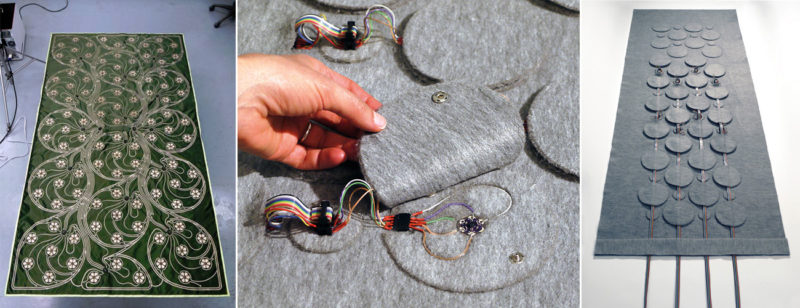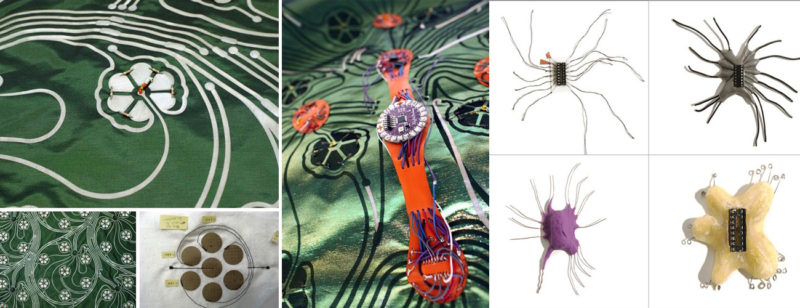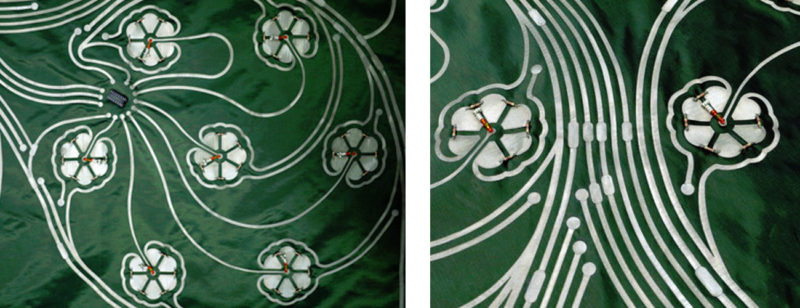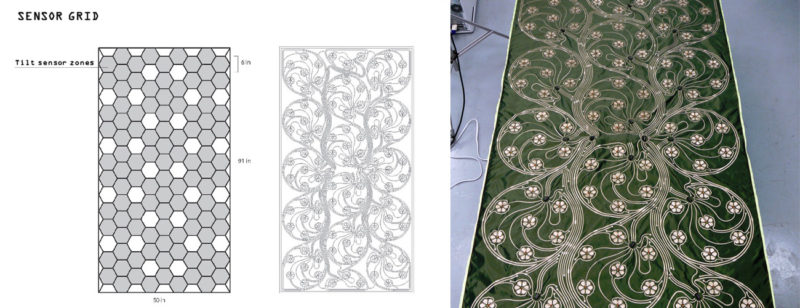IM Blanky is a computational fabric panel comprised of tilt sensors inter-weaved as a grid on fabric in geometrically interesting patterns. Accelerometers and embedded sensors detect the tiniest motions, allowing vital signals (heartbeat, temperature, and breathing) to be remotely monitored and stored for clinical analysis. It could also self-model its shape and function as a 3d scanner using tilt information.
Between the summers of 2011 and 2014, I participated in designing, testing, and building two IM Blankys. The first one, IM Blanky 1, was passive, meaning that its fabric surface did not have any type of pre-made accelerometers. Tilt was instead detected using free-flowing metal tassels affixed at the center of each flower. Whenever a tassel hit a petal (made of conductive threat), a change in resistance was detected and tilt was determined in software using some calculations. The blanket caused a stir after its exhibit at Stitches – Suzhou Fast Forward because how could something so pretty be so powerful? Admittedly, it was not as powerful as we had hoped. The tassels kept getting stuck by petals and loose threads, and in certain positions, tassels did not interrupt the current running through the petals enough to detect a change in resistance. So in 2012, I became the lead developer for IM Blanky 2. It was more digitally advanced, albeit less attractive. I spent weeks and weeks trying to make it work just using conductive thread, to no avail. So we gave in and used LilyPad Accelerometers and real wires, with the intention that engineers can make the technology less invasive once we had a well-functioning prorotype. I also implemented an interactive user interfaces to visualize and analyse the sensors’ data. IM Blanky 2 underwent rigorous testing at the Department of Occupational Therapy Home Lab (University of Toronto), and was found to be effective in detecting breathing patterns especially sleep apnea. Given its passive operation and attractive design, the home lab has integrated the blanky into a suite of tools to measure long term sleep patterns and their correlation with health and wellbeing. Despite the encouraging results, further testing ceased when the PhD student/post-doc accepted a scientist position in Ottawa. Around that time (August 2014), I started my M.Arch thesis on refugee camps so I no longer had the time or interest to do more software/hardware development.
*some images are courtesy of RAD and Studio n-1





